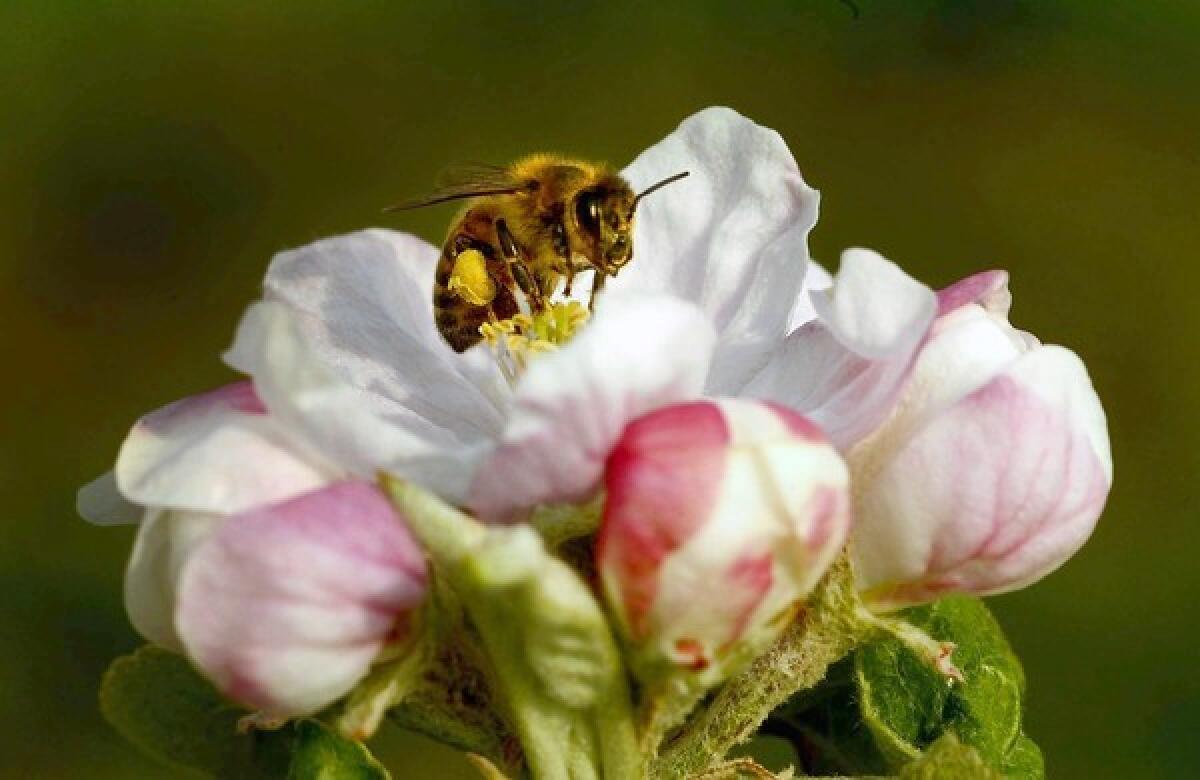Hotels get into beekeeping business

Reporting from Carmel, Calif. — — Thanksgiving dinner guests at Carmel Valley Ranch can expect the Central California resort to serve a honey of a meal.
The great bird will be basted to a rich golden brown in a glaze of honey, apple cider and butter. And there will be honey corn muffins and an elegant ice cream that’s a delicate mix of honey scented with lavender.
Guests can give thanks for these sweet dishes to the bees of Monterey Peninsula, most specifically the 70,000 Italian bees of Carmel Valley Ranch (www.carmelvalleyranch.com), which work overtime to provide honey for the upscale 500-acre resort.
The ranch’s four colonies of bees are part of a new trend swarming across North America and Western Europe. It’s accompanied by the buzz of millions of bees, many of them living on the rooftops of urban American hotels.
From Honolulu to Paris and from Vancouver, Canada, to the Florida Keys, honeybees have taken up residence on hotel ledges, rooftops and balconies and are busy doing what they do best: pollinating plants and making honey.
The hives are part of a beekeeping movement that has a two-fold purpose: to save the species, which has been decimated by colony collapse disorder; and to bring hyper-local honey to guests staying at these hotels.
Urban beekeeping has been growing in popularity for several years. Opéra Garnier, the Paris opera house, has kept hives humming on the roof for more than a quarter of a century.
The Obamas hopped on the bandwagon earlier this year when they served White House Honey Ale, home-brewed by their chefs with honey from the White House beehive.
But the loudest buzz comes from the hospitality industry, where hoteliers have found on-site beehives another prong in the movement to localized sourcing. Hotels are adding beehives to their properties to produce organic honey for use in a variety of areas, from spa treatments to cocktails.
At the Montage Deer Valley in Park City, Utah — the Beehive State — dandelion and lavender honeys are popular and are served at Buzz, the resort coffee shop (www.montagedeervalley.com).
Eighteen Fairmont Hotels have added apiaries, mostly on rooftops. At the Fairmont Washington D.C., the hives are named Casa Blanca, Casa Bella and Casa Bianca; at the Fairmont Newport Beach, executive chef Chad Blunston works with beekeepers to extract honey for use in Bambu Restaurant; and at the Fairmont San Francisco, 50,000 honeybees produce honey to be used at the afternoon tea service.
Last month I stayed at the Fairmont Waterfront in Vancouver, British Columbia, where I could look down from my 20th-floor room and see six hives — and about half a million bees — in the center of a third-floor balcony herb garden. The bees quietly went about their business within 20 feet of the hotel pool and within 50 feet of the mammoth Vancouver Convention Centre. Meanwhile, I snacked on a selection of the hotel’s delicate honey truffles, Bee’s Knees. In the dining room, I found a small jar of honey on the table at breakfast.
Despite the interest in saving bees, their numbers continue to dwindle.
In March, the United Nations sounded the alarm, seeking international efforts to save bee colonies, which have declined as much as 85% in some areas, particularly the industrialized Northern Hemisphere, according to a report by the U.N.’s environmental agency.
The causes: pesticides, air pollution, parasites, the loss of flowering plants and a decline in beekeepers in Europe.
“The way humanity manages or mismanages its nature-based assets, including pollinators, will in part define our collective future in the 21st century,” said Achim Steiner, executive director of the United Nations’ Environment Programme.
“The fact is that of the 100 crop species that provide 90% of the world’s food, over 70 are pollinated by bees.”
In the greater scheme of things, the hoteliers’ beekeeping efforts probably aren’t “a blip on the radar for honey production or pollination input,” said Kim Flottum, editor of Bee Culture magazine.
“But the promotional value far outweighs the practical application value,” he added. From the standpoint of the beekeeping community, the hotel trend is appropriate because “it keeps honey bees in front of people all the time, and featured in a very positive light.”
The bottom line, Flottum said: “The hotel wins, the bees win, beekeeping and beekeepers win, the local flora thrive, folks who never thought about where their food comes from get a little insight into that side of the business. It’s all good.”
John Russo, the beekeeper at Carmel Valley Ranch, couldn’t agree more. He runs a program there called the Bee Experience that introduces guests to beekeeping. “When people get enthused about the bees, and want to have their own hives, I feel like I’ve made a few more converts,” he said. “That’s a terrific feeling.”
More to Read
Sign up for The Wild
We’ll help you find the best places to hike, bike and run, as well as the perfect silent spots for meditation and yoga.
You may occasionally receive promotional content from the Los Angeles Times.






